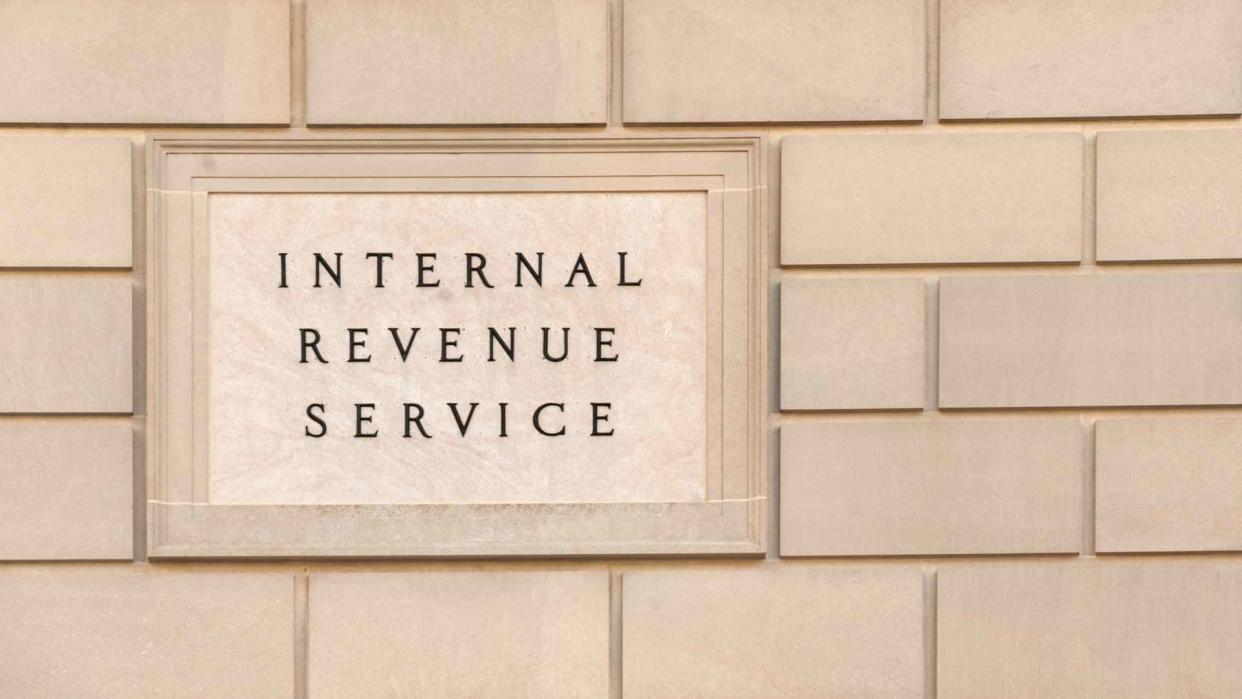Taxes 2023: Why Doesn’t the IRS Just Send a Bill? (It’s Complicated)

According to the IRS, the average taxpayer takes 13 hours to fill out Form 1040 — 25 hours for those who own businesses — at an average cost of $250 per return.
But only in America.
Related: Reduce Your Social Security Tax Bill Using These Tips
Check It Out: 3 Signs You’re Serious About Raising Your Credit Score
In countries like the U.K., Spain and the Netherlands, the government withholds taxes from wages, similar to the U.S., but most residents don’t have to file returns — and they certainly don’t have to dip into their refunds for the privilege.
Instead, the government handles the paperwork by sending pre-populated returns to taxpayers, who then check the math and either sign off or amend any mistakes.
Here’s why — instead of just receiving a bill or refund from the IRS — you spend every April scrambling for records and receipts, scouring your inbox for documents and plugging data into expensive software only to lay awake afterward wondering if you got it right.
The IRS Needs More Than Your W2 Provides
Your employer reports your wages and withholdings to the IRS, but that data paints an incomplete picture. Although the agency knows your income, only you know your credits, deductions and other key information needed to process your return and determine how much you owe the IRS or how much the IRS owes you.
For example, you might have gotten married, gotten divorced, had a child or had a child age out of dependent status. Those situations and many others could lead to a bigger refund or a bigger bill — but the IRS doesn’t know any of that until you submit Form 1040.
However, the nuts and bolts of collecting relevant personal data and the purported need for clerical redundancy tell only part of the story.
Take Our Poll: Do You Think Bankruptcy Is an Acceptable Way To Escape Student Loan Debt?
Believe It or Not, the Real Reasons Involve Money and Politics
In 2005, California announced a new tax-paying system called ReadyReturn, which followed the return-free model that makes Tax Day a non-event in roughly 30 countries. According to the L.A. Times, many Californians felt that, for the first time, their government was actually doing something that would make life easier and less expensive.
Then Intuit stepped in.
You Know Big Pharma and Big Oil … Meet Big Tax Prep
ReadyReturn triggered a relentless and successful 15-year crusade by the country’s biggest tax software providers to hamstring California’s effort and to keep the federal government from following its lead.
If the IRS adopted a return-free system, it would save both the government and taxpayers billions of dollars per year — but it would also put TurboTax and the rest out of business. Intuit, which owns TurboTax, led a coalition of corporate stakeholders that own three-quarters of the market to lobby against the movement for free, simple tax filing.
The Shady Roots of IRS Free File
The brand-new special interest co-op — dubbed Big Tax Prep — persuaded the government instead to launch what became Free File, an IRS-directed service that lets most taxpayers file their returns at no cost.
But the IRS wouldn’t run the program directly. Instead, it would direct taxpayers to third-party partners, which happened to be the same tax-prep corporations that had lobbied so hard to maintain the status quo.
Intuit and other major industry players now stand accused of using their Congressionally mandated government partnership to lure taxpayers into buying fee-based services and add-ons after IRS Free File directs them to their sites.
Never Heard of Free File? Join the Club.
According to the New York Times, seven in 10 taxpayers qualify for the IRS Free File program, but only a little more than 2% take advantage of it. That’s because most people don’t know it exists.
The IRS has been so desperately starved for funding for so long that it hasn’t paid to advertise the program since 2014. When the IRS tried to strengthen Free File so that more eligible taxpayers would actually use it to file for free, H&R Block and TurboTax announced they were dropping out of the program.
And the program is feeble by design.
Anti-Tax Activists Lobbied Long and Hard for an Overburdened, Underfunded IRS — and They Got It
The return-free movement didn’t start in 2005 in California. A former governor of the state, Ronald Reagan, endorsed return-free filing 20 years earlier in 1985, but his philosophical allies in the small-government anti-tax movements rebelled.
Longtime anti-tax crusader Grover Norquist and his powerful special-interest group, Americans for Tax Reform, led the charge. On paper, Norquist preferred to “enhance voluntary compliance” — as if being legally required to fill out a 1040 makes paying taxes a voluntary endeavor.
According to the Washington CityPaper, the real reason was that Norquist and his allies didn’t want a streamlined IRS that could efficiently collect revenue. He wanted the agency to be hobbled and eventually eliminated, a crusade that Norquist wages to this day.
When President Biden announced $80 billion of badly needed IRS funding as part of the Inflation Reduction Act, Norquist’s group launched a campaign to pressure lawmakers to oppose the legislation. He also spearheaded a PR campaign to persuade America that the money would be used to hire 87,000 new armed IRS agents to conduct mass audits on ordinary taxpayers — and according to Kiplinger, the messaging has mostly been successful.
More From GOBankingRates
This article originally appeared on GOBankingRates.com: Taxes 2023: Why Doesn’t the IRS Just Send a Bill? (It’s Complicated)
